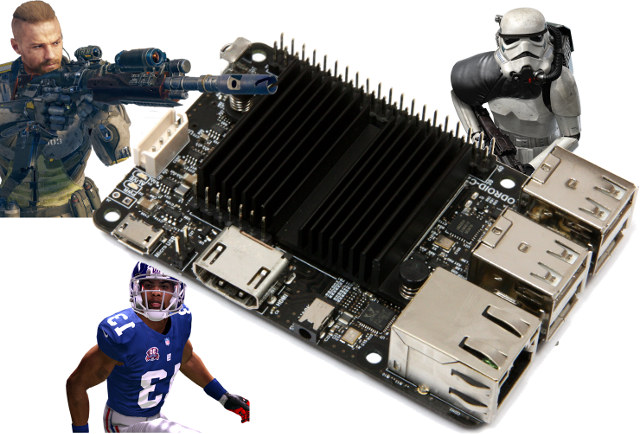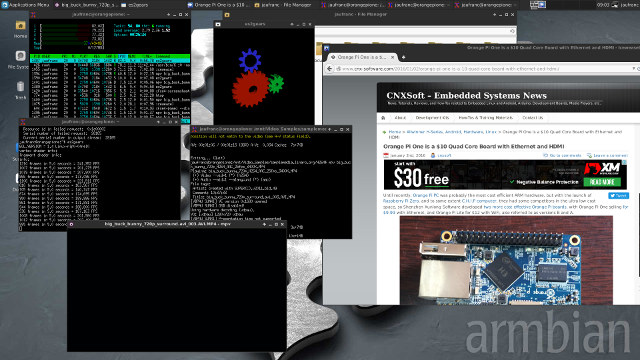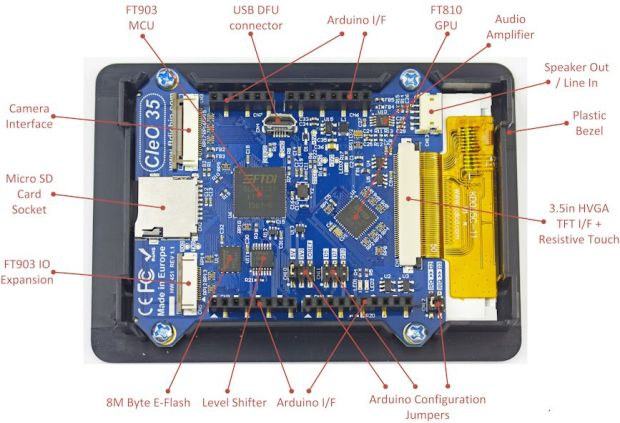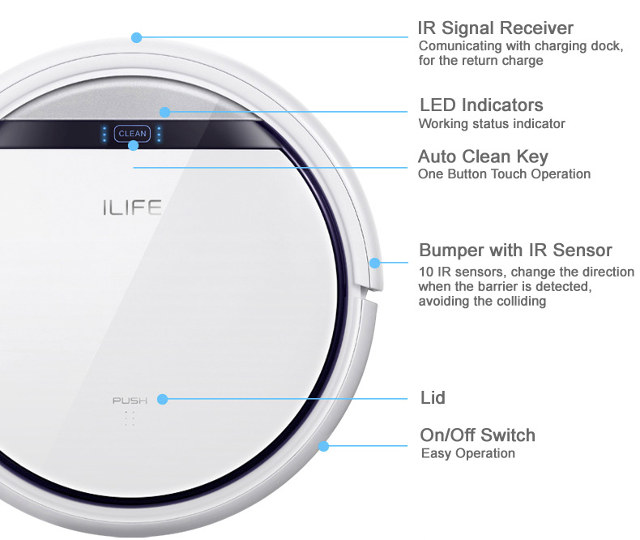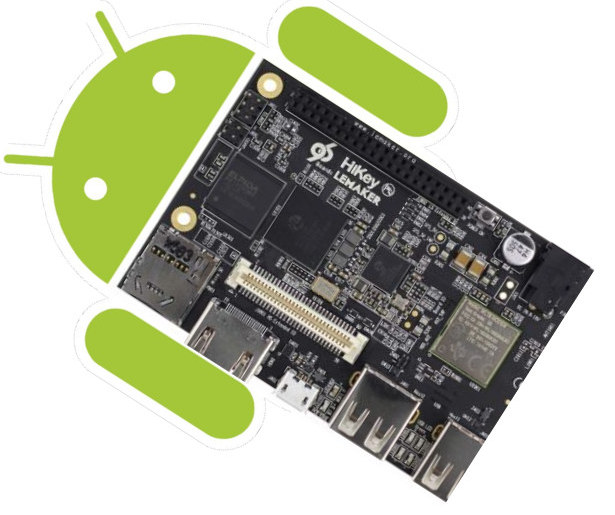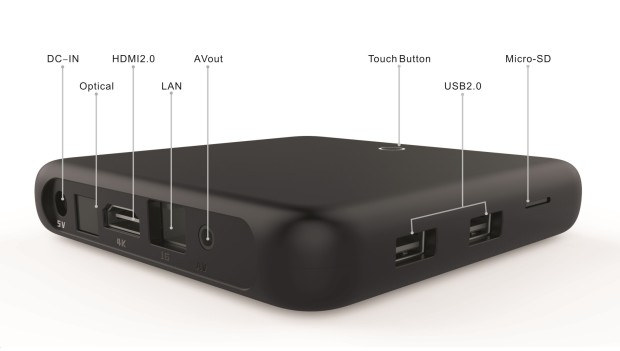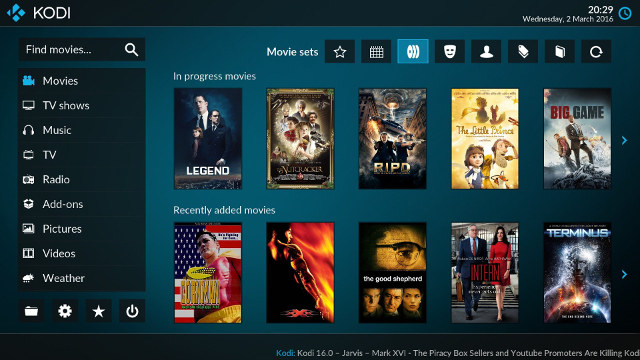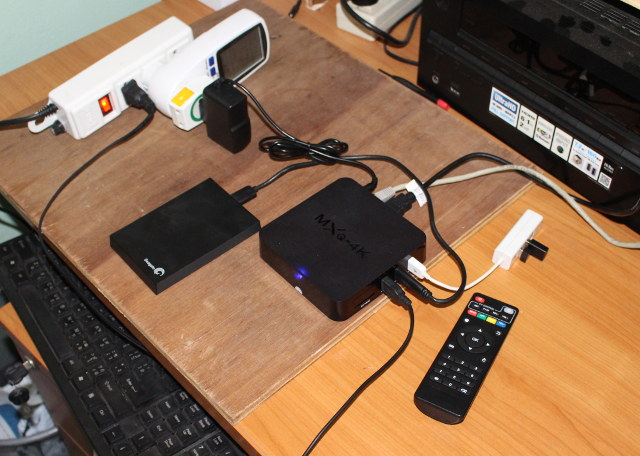Nvidia first showcased PC games streaming to Nvidia Project SHIELD Game Console at CES 2013, and since then Moonlight project has been created to provide an open source implementation compatible with Nvidia Gamestream, and supported on Linux, Mac OS and Windows PC, Android & iOS mobile devices, as well as Samsung VR kits. There’s also an implementation called Moonlight Embedded designed for ARM Linux platforms such as Raspberry Pi,ODROID, Cubox-i boards, and ODROID-C1 and ODROID-C2 boards even got support for H.265 streaming very recently allowing for better quality over H.265 at a given bit rate, and possibly 4K @ 60 Hz gaming on ODROID-C2 board. You’ll need a Windows gaming PC with an Nvidia GTX 600/700/900 series GPU, a wired connecting or a high-end 802.11 router or greater, and Nvidia Geforce Experience (GFE) installed on your PC. H.265 requires an Nvidia 900 series GPU such as Nvidia GTX960. Once this […]
Accelerated 3D Graphics, Hardware Video Decoding, and Network Performance on Orange Pi One Board (Video)
I’ve just written Getting Started Guide for Orange Pi One, a $10 development board based on Allwinner H3 quad core Cortex A7 processor, where I explain how to install and configure Armbian distribution on the board. As promised, I’ve also tested 3D graphics acceleration, and hardware video decoding, and also included some Ethernet benchmarks. Since ARM Mali-400 GPU found in Allwinner H3 is only capable of OpenGL ES, as in most ARM SoCs, you can test 3D graphics acceleration by using es2gears (and not glxgears as I’ve seen some other do in the past):
|
1 2 3 4 5 6 |
es2gears EGL_VERSION = 1.4 Linux-r3p0-04rel0 vertex shader info: fragment shader info: info: 1463 frames in 5.0 seconds = 292.425 FPS |
The log shows the utility is using Linux-r3p0 Mali driver, and the gears are display at a high frame rate close to 300 fps. If I switch to full screen, the frame rate drops to about 43 fps, which should still be acceptable. CedarX is the infamous closed source and GPL violating media library released […]
Cleo35 Touchscreen Display for Arduino UNO Comes with Tutorials and Example Projects (Crowdfunding)
There are already various options to add a (touscheen) display to Arduino board with software support including TFTLibrary for Arduino, and recently I tried Nextion serial touchscreen displays that are supported by a WYSIWYG editor, but the latter is only supported in Windows and not exactly user-friendly, and I found the few provided tutorials would only work with a specific resolution incompatible with the displays I had been sent. So I gave up on the idea of interfacing the display with Arduino or ESP8266 as it would be too time-consuming. FTDI CleO project might be faster and easier to get started, as their CleO35 touchscreen display for Arduino UNO will come with a 20 chapter tutorial covering over 80 topics, and 20 projects to get started. Some of the key features and specs of Cleo35 display include: MCU – FTDI FT903 32-bit FT32 core @ 100MHz with 256kB on-chip Flash […]
$100 Chuwi Ilife V5S Autonomous Robotic Vacuum Cleaner Offers an Alternative to iRobot Roomba
iRobot Roomba autonomous vacuum cleaners have been around since 2002, with the robots automatically cleaning the floor, detecting walls and edges, going around table and chair feet, etc… The company also produced iCreate 2 programmable robot for educators, students and developers who wants to learn about robotics, and works with Arduino and Raspberry Pi boards. I had seen similar cleaners from Chinese vendors in the past, with prices starting at $30, but they looked basically useless based on the specs, but yesterday I discovered Chuwi Ilife V5S robotic vacuum cleaner and mop that seems pretty decent, and even can go back to its charging station automatically. Chuwi Ilife V5S key features and specifications: Anti-collision System, drop avoidance induction 50db low noise design; 850pa strong suction Sensors – 10 IR sensor on sides and bottom, OBS (Optical backscatter point sensor) sensors, 1 set wall sensor. (Note: OBS is based on IR, […]
96Boards Hikey Development Board is Now Officially Supported in AOSP
Hikey is a one of the first 96Boards compliant development board manufactured by either LeMaker in China and CircuitCo in the US, and while the hardware requirements of 96Boards specifications are rather easy to meet, the software requirements including “bootloader (open source), accelerated graphics support (binary or open source), a Linux kernel buildable from source code based from mainline, or the latest Google-supported Android kernel version” are much harder to comply with. Linaro had a very good news for Linaro Connect Bangkok as they announced Hikey board was supported in Android Open Source Project (AOSP). So that means Hikey board will run the latest version of Android like Google Nexus devices, with the advantage of also getting more recent devices. If you want to build an Android image from AOSP just retrieve the source code:
|
1 2 |
repo init -u https://android.googlesource.com/platform/manifest repo sync -j8 |
Grab & extract vendors binaries for Hikey from Google.com. and complete the build:
|
1 2 3 |
source build/envsetup.sh lunch hikey-userdebug make -j8 droidcore |
[…]
Unuiga S905 TV Box Runs Remix OS 2.0 on Amlogic S905 Processor (Crowdfunding)
There are many Android TV boxes based on Amlogic S905 processor on the market selling for as low as $40 shipped, and hardware-wise Unuiga S905 and S905+ TV boxes look quite similar to their competitors with respectively 1GB RAM and 16GB flash, and 2GB RAM and 32GB flash, but the main differentiating factor is official support for Remix OS 2.0. Unuiga S905 and S905+ specifications: SoC – Amlogic S905 quad core ARM Cortex-A53 @ up to 2.0GHz with penta-core Mali-450MP GPU System Memory – S905: 1GB RAM; S905+: 2GB RAM Storage – micro SD slot; S905: 16GB flash, S905+: 32GB flash Video Output – HDMI 2.0, AV Audio – HDMI, AV, coaxial S/PDIF Connectivity Gigabit Ethernet WiFi – S905: 802.11 b/g/n; S905+: dual band 802.11 b/g/n/ac Bluetooth 4.1 (according to comment on YouTube) USB – 2x USB 2.0 host ports Misc – IR receiver, touch button for power on/off and […]
Meet Estuary and Estouchy, The New Default Skins for Kodi 17 and Beyond
I’ve only known XBMC / Kodi since the open source media center started to show up on ARM based Android and Linux mini PCs around the mid of 2012, and in most devices the default skin called Confluence was used with Kodi/XBMC. It has been used as the default since 2009, and Kodi developers have decided a refresh would be good for Kodi 17 Krypton which will feature two new skins: Estuary for media players and HTPCs, and Estouchy for devices with a touchscreen such as smartphones and tablets. Estuary does away with the horizontal menu found in Confluence, and instead moves the main menu options to the left. Several widgets have also been added for movies and TV including Random, Recently added, In progress and, Random, and similar options are available for Music too. The media library has also changed the way it displays movies and TV show information, […]
10-bit H.264 and H.265 Video Playback in MXQ-4K Rockchip RK3229 TV Box
Rockchip RK3229 is an exciting media processor because it’s found in ultra low cost TV Boxes such as MXQ-4K, outputs up to 4K @ 60 Hz, and supports 4K video decoding of 10-bit H.264, 10-bit H.265 and VP9, including videos with very high bitrates (200+ Mbps). That’s the theory, which I’ve put to the test with MXQ-4K TV box. Since the network interfaces of the device are limited to 100M Ethernet and 802.11n WiFi, and some videos are well above 100 Mbps, I’ve decided to test video playback from a USB hard drive instead. I’ve tried the three pre-installed video player apps: Kodi 15.1, “Video”, and “Video Player” , and they all have similar capabilities except Kodi is a little less stable on this device. The system detected my 4K TV (LG ) and automatically set the resolution to 3840×2160 @ 60 Hz, which I used for the remainder of […]


